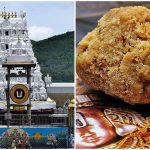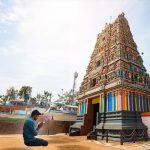India will ring in the New Year 2024 with elaborate preparations for the most anticipated inauguration of Ram Mandir, Ayodhya on 22 January – that will go down as a momentous event in the annals of Indian history. Of the most ambitious religious constructions, such as Vrindavan Chandrodaya Mandir and Mayapur ISKCON’s Vedic Planetarium Temple; the Ram Mandir is a manifestation of the deep-rooted faith of millions of Indians who hold Ram Lalla close to their hearts.
Designed 3 decades ago by Chandrakant Bhai Sompura, who hails from a renowned family of architects credited with over 200 shrines, including Gujarat’s Somnath Temple; the Ram Mandir of Ayodhya is a lot more than a brick-and-mortar edifice. Each and every brick in the grand temple complex, which will spread over 70 acres on the holy banks of the Saryu River, is concretizing the spiritual and cultural glory of India. It’s a harbinger of cultural renaissance, a testament to resilience, and a monument celebrating the homecoming of Ram Lalla.

Expected to be the world’s third largest temple next to BAPS Swaminarayan Mandir, New Jersey upon the final-phase completion in 2025, the Ram Mandir complex will be spacious enough to host a million devotees at any time. The massive three-storey structure that rises 161 feet above ground is supported by a 50-ft deep foundation, ensuring that the temple can withstand the blows of time for at least one thousand years without requiring renovation. The foundation can resist even a 6.5-magnitude earthquake, asserts Champat Rai, the general secretary of the temple trust.
A sneak peek into garbhagriha of Ram Mandir
The garbhagriha of Ayodhya’s Ram Mandir is a world of ancient Indian art in itself. A kaleidoscope of various sculptures from different parts of the country, it is modelled on the inner sanctum of Gujrat’s Modhera Sun Temple wherein the first rays of the sun fall on the deity. Similarly, the garbhagriha of Ram Mandir in Ayodhya is designed in such a way adhering to the millennia-old Vaastu Shastra principles that sunrays would fall on Ram Lalla to be enthroned on an 8-ft-high gold-plated marble throne. A 5-ft murti of Lord Ram shows Him as a 5-year-old child armed with a bow and an arrow.
Interestingly, no steel or iron has been used in construction of the Ayodhya temple. The main temple is built entirely of stones, wood, copper and white cement. Every brick with ‘Ram Naam’ engraved on it has gone into erecting the temple, just as the stones bearing the same sacred name were laid to build Ram Setu in Treta Yuga. It reflects unbridled devotion of Hindus through ages.
Artisans and sculptors from across India have come together to bring Ram Mandir alive as an immortal wonder on earth. The superstructure is carved out of Bansi Paharpur pink sandstone from Rajasthan. Crafted by a team of carpenters from the temple towns of Tamil Nadu, the 44 doors of the mandir, including the garbhagriha door and the main entrance, will leave devotees in awe of their intricate design, impeccable beauty, and geometrical precision.
A most intriguing feature of Ayodhya Ram Temple is its east-facing Gopuram-style entrance, masterfully integrating Dravidian glory into the Nagara architectural splendor. Every inch of the temple – from walls and doors to columns, ceilings and plinths – is adorned with exquisite carvings of gods, goddesses, and narratives from the epics and scriptures of India. The sculpture of the temple provides a window to the cultural heritage of Bharat. The 366 columns feature life-like idols of various avatars of Vishnu, Shiva, Saraswati, and Chausath (64) Yoginis.
An octagonal shikara towers above the sanctum sanctorum, which is surrounded by five dome-shaped mandapas. Kudu, Nritya, and Rang mandapas are located on one side of the garbhagriha whereas Kirtan and Prarthana mandapas are on the opposite side. Of the colossal temple accessories is a whopping 2100-kg bell that will fill the air of Ayodhya with sonority of the morning and the evening aarti. A 44-ft dhwaj dand (flag pole) will be perched atop the temple. A dhwaj dand or dhwaj stambh represents the cosmic axis and draws the energy of the universe to the garbhagriha.
Arrangements are in full swing for the Pran Pratishtha ceremony to take place on 22 January. 600 kg of desi ghee from Jodhpur and turmeric from Cambodia have already arrived in Ayodhya. The Maharishi Sandipani Ram Dharam Gaushala in Jodhpur sponsored ghee for the first aarti and hawan rituals. Prime Minister Narendra Modi and 10,000 dignitaries from different parts of the country will attend the inauguration ceremony. On the auspicious day of Ram Lalla’s consecration, a special puja will be performed at 5 lakh temples across India.
As per reports, a time capsule has been placed 200 feet under the ground where the foundation of the temple has been laid. The main objective of placing the time capsule is to save the origin of the temple so that the temple history can be traced thousands of years down the line.







